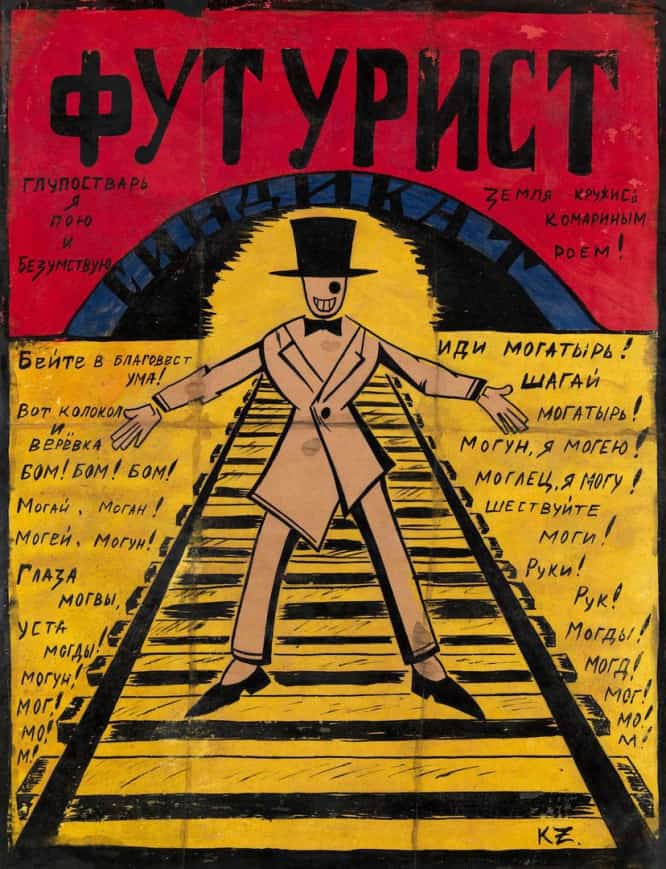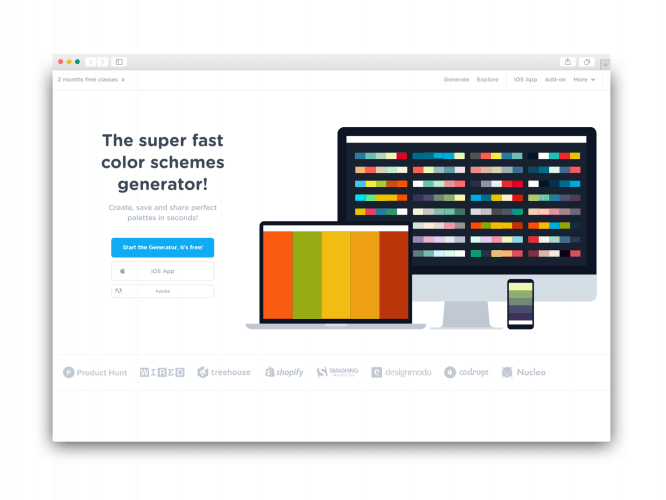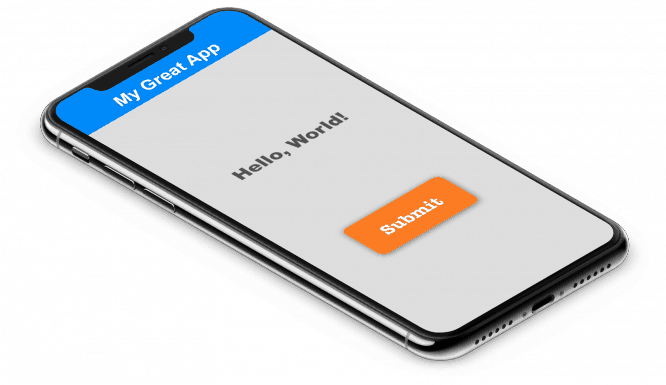12 mistakes aspiring designers make in interviews
12 mistakes aspiring designers make in interviews
Every day I get from one to five job applications in my mail. I answer (or don’t answer) emails, give out quizzes, conduct interviews and see the same problems.
The competition among experienced guys is not high. But inexperienced designers are like fish in the sea. It would seem that the guys have to dodge wildly in order to stand out in the stream, but their problems are, plus or minus, the same. Strong and experienced designers are different, but weak and inexperienced are alike: they have the same type of portfolio work, the same type of letters, and similar behavior during interviews.
In this article, I will talk about the problems in letters and interviews: what mistakes designers make and how the employer interprets them. There will be no moral: it’s just a list of observations and a bug report. You may find this article helpful if you are looking for a job.
Problems in letters
There is no letter at all
In the stream of vacancies, the designer clicked the “Apply” button. He presses such a button on the machine when he sees the required amount in the “Salary” field. To get acquainted with his portfolio, you need to go to the profile, rummage there, save links.
Not that the employer is broke. But practice shows that even if you devote time to such an applicant, write a letter and send a test task, in 90% of cases he will not do anything. He does not have a formed habit of spending energy on a potential employer.
Stream of Consciousness letter
An epic canvas that tells about the difficult fate of the author. How he was born in a remote taiga among squirrels and spruce cones, how he ate only roots until the age of sixteen, studied to be a steelmaker, until one day his spiritual quest led him to the profession of a fashion photographer.
The hero moved to Moscow, but Moscow is a terrible city, greedy and vain, and soon life forced the hero to go to the printing industry and make leaflets “Sale in a down jacket shop.” The hero, as he could, wallow in this swamp, moonlighted at weddings, funerals and commemorations, mastered the craft of an es-em-emist, and now he finally realized that the path of enlightenment lies in the wilds of web design.

This heartbreaking story is followed by a detailed retelling of all hobbies: meditation, cross-stitching, felting toys, installing plastic windows. At the end, a modest link to the portfolio: two business cards, one flyer.
No doubt, the epic is exciting. But what to do with it?
Strange formats
Portfolio in rar, resume in psd, links to freelance. Maybe there is an uncut diamond hiding somewhere, but the likelihood of finding it on the site of a freelancer tends to zero. Artdir hasn’t opened links yet, and his heart is already anticipating trash.
Illiteracy
Spelling and punctuation problems, spaces in front of periods, and typos betray negligence. Of course it can be treated. Of course, this does not put an end to the designer. However, negligence has such a property – to wander into processes, layouts and business correspondence. Artdir, who constantly parses dozens of responses, such things are alarming from the first lines.
Chaos
The lack of structure (and at least paragraph breakdown) gives out chaos in the head of the designer and the inability to organize oneself. But these skills are just as important as technical skills and portfolio.
Stamps for impression
“I am a professional in my field.” “I will responsibly solve your problems with a creative approach.” It is clear that the applicant is trying to impress by any means possible. And from a purely human point of view, this can be accepted.
However, the words about professionalism do not convince the interlocutors that the person is really a professional. The examples of the work and the benefits it can bring to people are convincing.
Stamps infostyle and Jim Camp for three hundred
“I follow the principles of fixed deadlines”, “I agree on the understanding of the problem”, “I solve business problems according to the FFF system”. And my favorite: “I understand you are in doubt. If I’m not the right fit for you, just say no. “
The Gorbunov Bureau is great in itself, the school is strong, but, unfortunately, zombie children often leave it. When a designer in a letter immediately rests on FFF, it shows that he is very much confused by the rules of the bureau. These rules will come first, not personal principles of work. This approach suits some studios, but for others it is a wake-up call – there are doubts about the flexibility of a specialist.
As far as Camp is concerned, negotiating this system is a great tool, but one needs to know how to use it. Clumsy manipulations betray only a superficial acquaintance with Camp and do not bring them closer to the goal.
Problems in interviews
Designer as artist
“I plunged into the world of design after the art history faculty”, “I always liked decorating the world”, “I want to create something very beautiful” and other variations on the theme.

Hard case. Such a designer has the idea that design is all about beautiful pictures. Perhaps the designer managed to draw a couple of cute layouts, but when faced with the real task of a serious client, hell begins. Artdeer and managers will have to spend many months to change the approach and turn the designer to face the business requirements. And not the fact that it will work out.
Lack of confidence in yourself and the world
What do you want to do with us? “I dont know”. Tell us about your experience – were there any interesting tasks? “Well, probably …” What comes easy for you? “Well, anything.” What’s hard? “Well I do not know…”
Self-doubt is a common symptom of designers, but you shouldn’t be so lethargic. How will an employer understand anything about you if you don’t tell anything?
Overconfidence
“I will prove to you that I am the coolest, in a month everything will shine, you will raise my salary, the processes will go fabulous, the design will be awesome!”
Not only does this sound unconvincing, but also the person wildly winds up expectations. Such a designer is banally dangerous for the project. Once he starts doing the same with customer expectations, the bike is on fire.
Flattery
Dishonest praise is easily calculated with simple questions: okay, why do you like us so much? Which of our projects impressed you? What do you know about us? When it turns out that the flatterer does not really know anything, trust in him disappears.
There is a nuance here: the question “Why did you come to our company” itself sounds silly. Like, you were looking for a designer, and I was looking for a job – so the stars agreed, what is there to talk about?
But this question is very important if the agency has its own specifics. For example, work only with corporations or only with startups, focus on services, online stores or construction companies. The employer asks the question “Why did you come to us” at the interview to understand the degree of the applicant’s awareness and to make sure that the person really understands where he is going. If the applicant does not distinguish this company from others in any way, then a lot of surprises and collapse of expectations await him in his work.
No questions
The most alarming bell: a person comes for an interview, he intends to connect his life with a certain company, and he has no questions for her. Guys, how does your process work? Who do you work with? Who are you not working with? What are the challenges, what is the routine, what are your plans and what exactly do you need me for?
These questions are necessary because a designer is hired to solve problems. If a designer does not show interest in other people’s tasks and problems, it means that he has come to solve only his own problems. With this setup, nothing will come of it.
A person becomes in demand in the market when he is aimed at helping other people and companies. The more a designer is interested in the problems and specifics of the business, the more valuable he is for the company, the more benefit he can bring. He can create aesthetically pleasing layouts by collecting likes on behans and dribbles, but if these layouts are not based on a business task, there will be no sense from such a worker.
Source: DesignKabak
…


